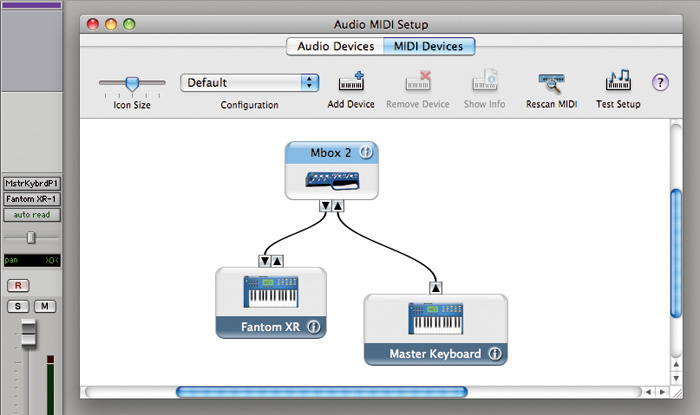- If you want to hear the audio while it's playing on your normal Output device (e.g. Your Built-in speakers or attached headphones), you need to open the native OS X application Audio Midi Setup. It's located in your Applications folder under /Applications/Utilities.
- In the Audio MIDI Setup app on your Mac, choose Window Show MIDI Studio. In the MIDI Studio window, click the Choose MIDI Configuration pop-up menu (it may show Default), then choose New Configuration. Enter a name for the new configuration, then click OK. To add a new external MIDI device, click the Add button in the MIDI Studio toolbar.
- ๑۩۩๑ Buissiness email: tylerholloway390@gmail.comSoundCloud: Unboxing And Reviews: https://w.
On Macintosh, the OS X application Audio MIDI Setup, located in the Utilities folder inside the Applications folder, is used to set up and describe your MIDI setup. In addition to the standard MIDI drivers or drivers (CoreMIDI on the Mac and midimme on Windows ) or drivers you may have installed on your system, there are additional MIDI.
Due to the updated security architecture introduced since macOS 10.13 High Sierra, the system extensions for all newly-installed third-party software will automatically be blocked from running. If your MOTU interface is not showing up in Audio MIDI Setup, MOTU Audio Setup, MOTU Discovery, or your DAW on High Sierra or later, you might need to enable the driver in your System Preferences.
To enable the MOTU drivers, follow these steps:

- Download and install the very latest installer for your MOTU interface.
- After restarting, open System Preferences.
- Select Security & Privacy.
- In the General section, click the Allow button.

- The Allow button will disappear 30 minutes after installation. To display the Allow button, run the installer for the MOTU driver again.
- This behavior will only occur when installing a MOTU driver for the first time on macOS 10.13 High Sierra or later. If you have already installed the driver on an earlier version of macOS and upgraded to macOS 10.13 High Sierra or later, you should not need to enable the driver.
- This issue is not specific to MOTU. It is a general change introduced in macOS 10.13 High Sierra, and will affect any third-party (i.e. non-Apple) kernel extensions.

Audio MIDI Setup User Guide
Use Audio MIDI Setup to set up audio input and output devices, such as microphones and multichannel audio interfaces. You can also use it to route audio from iOS and iPadOS devices directly into your Mac.
Available settings in Audio MIDI Setup depend on the audio device you’re using. For example, you can adjust the volume for each channel your audio output device has available.
Connect your audio devices to your Mac and, if necessary, install any software included with the devices.
In the Audio MIDI Setup app on your Mac, in the sidebar of the Audio Devices window, select a device.
Note: For iOS and iPadOS devices, first click Enable, then select the device. You may be asked to unlock your device with a passcode or to trust the device.
Control-click the device, or click the Configure Selected Device pop-up menu at the bottom-left of the sidebar, then choose how the device is going to be used:
For sound input: Choose Use This Device for Sound Input.
For sound output: Choose Use This Device for Sound Output.
For playing system sounds: Choose Play Alerts and Sound Effects Through This Device.
On the right side of the Audio Devices window, choose the options available for the device you selected:
In most cases, “Clock source” is set to the default.
Click the Format pop-up menu, then set the sample rate and bit depth. Make sure they match the appropriate settings for your audio device.
If your Mac supports the hardware sample rate converter, the Hardware Rate Converter pop-up menu is available in the Input pane. When you choose Automatic from the pop-up menu, the hardware sample rate converter is turned on if the audio samples coming in are PCM and formatted according to the international standard IEC 60958-3. The hardware sample rate converter is turned off if the input stream is encoded. You can also choose Enable or Disable from the menu, to keep the hardware sample rate converter turned on or off.
If software volume control is available for your device, the Volume sliders appear blue to indicate that they’re active. Drag the sliders to set the volume for each channel.
To set up a surround (multichannel) speaker configuration, click Configure Speakers, then set up the configuration.
